There’s something magical about walking through the streets of Viana do Castelo during the Romaria d’Agonia.
Every August, this northern Portuguese city explodes with dazzling costumes, joyful parades, and age-old traditions that celebrate both faith and the sea.
As a visitor, I got swept up in a wave of color, music, and welcoming smiles as locals honored Nossa Senhora da Agonia, their patron saint.
From intricate gold filigree jewelry to the famous salt carpets crafted by hand, Romaria d’Agonia pulses through Viana do Castelo’s history and soul.
The festival isn’t just about spectacular sights—it’s about community and tradition.
Fishermen, families, and travelers like me gather to share in something truly special.
If you’re curious about Portugal’s vibrant culture or craving an unforgettable summer experience, Romaria d’Agonia stands out as a must-see.
I’m excited to share how this festival captured my heart and why every traveler should have it on their radar.
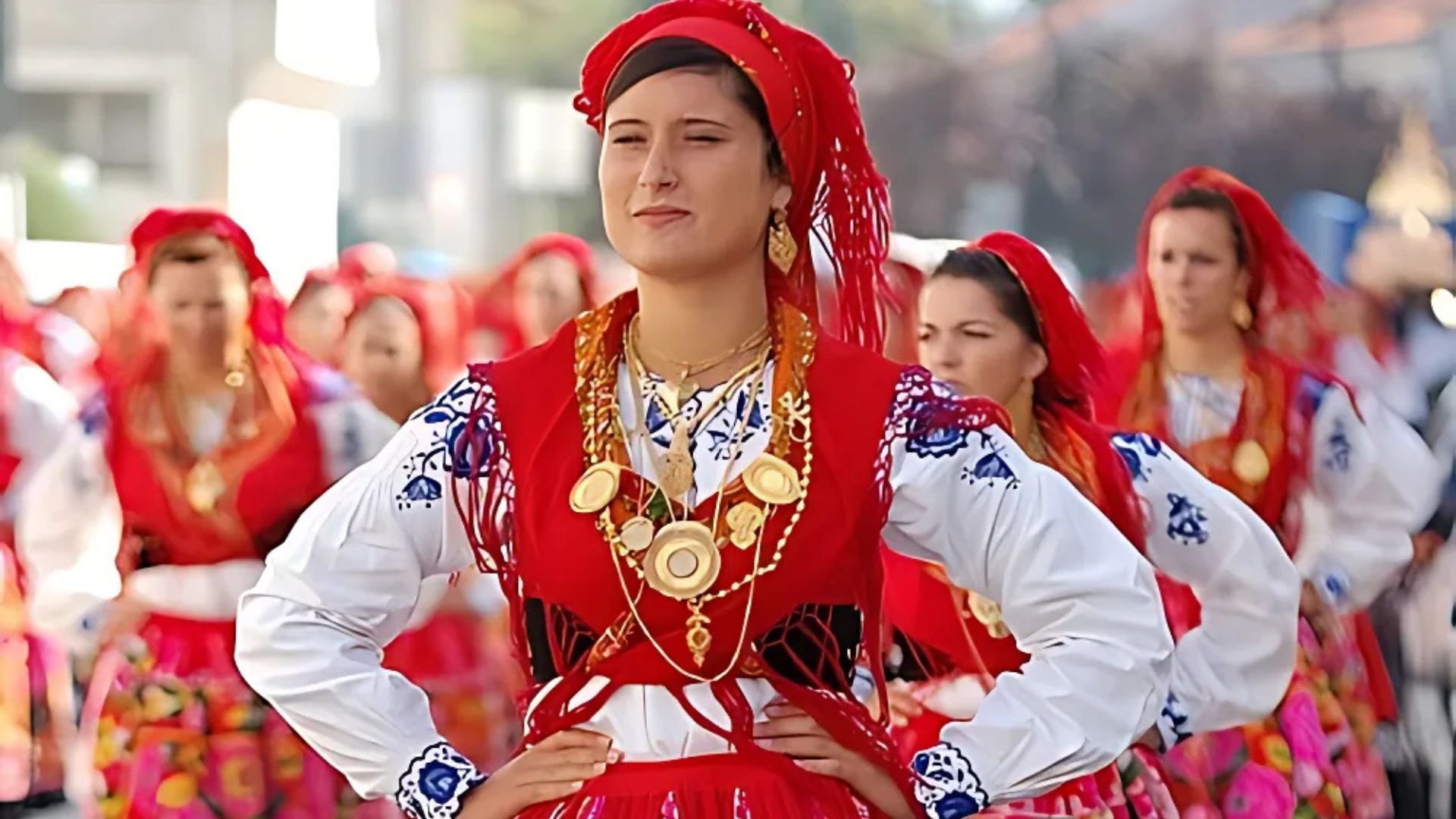
What Is the Romaria d’Agonia? The Heartbeat of Viana do Castelo
I discovered that Romaria d’Agonia blends heartfelt faith, vibrant tradition, and the unique legacy of Portugal’s Minho region.
It’s so much more than a festival—it’s the soul of Viana do Castelo, drawing people together each August for prayer, color, and celebration.
Origins and History
The roots of the Romaria de Nossa Senhora d’Agonia reach back to the 18th century.
It began as a simple religious procession honoring the Padroeira, Senhora d’Agonia.
Locals believed she protected fishermen and families from storms and danger at sea.
Over the years, this devotion grew stronger.
In 1751, the image of Senhora d’Agonia entered the Capela do Bom Jesus do Santo Sepulcro.
That moment made the annual festival even more important to the city.
As decades passed, the event expanded.
It now features elaborate parades, traditional music, and dazzling costumes.
Since 1772, the Romaria has lit up Viana do Castelo, rooting every festivity in the pride of Minho.
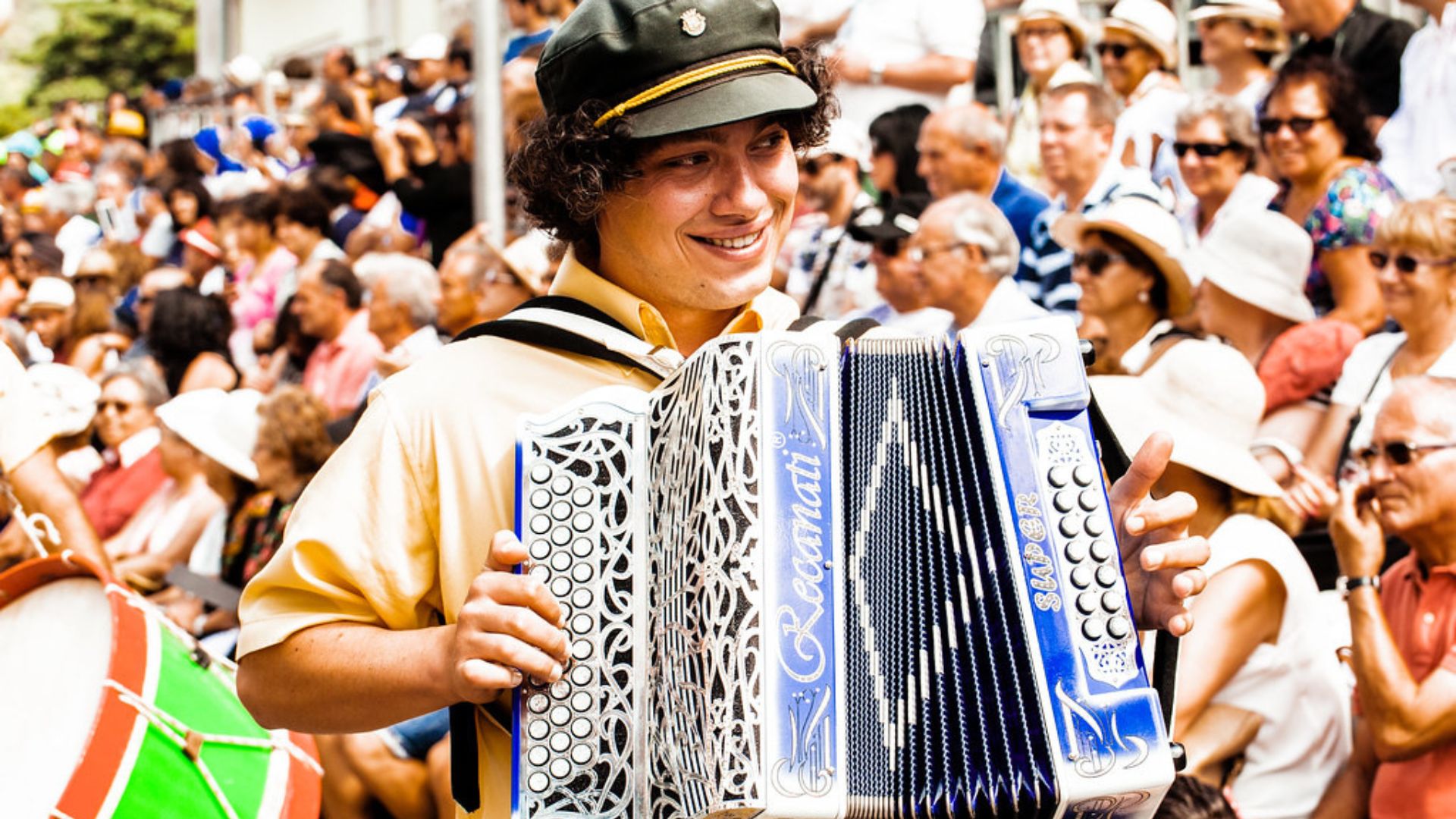
The Festival’s Spiritual Significance
For many, this is the most important festival in Portugal—often called the “maior romaria de Portugal.”
I could feel a deep sense of devoção as locals and visitors gathered in honor of Senhora d’Agonia.
Her story lives in the city’s heart, especially for those who rely on the sea.
The festival isn’t just about parties and processions.
It’s a time for prayers, blessings, and heartfelt promises.
City churches fill up, with masses and vigils drawing thousands.
People wear their best traditional clothes, often handed down through generations.
You can see the faith and pride in every parade and moment of quiet reflection.
Why August? Timing and Traditions
I learned that August was chosen because fishermen traditionally prayed for safety during the roughest summer months.
The festival happens every year, and in 2025 it’ll run from August 12 to August 20.
August in Viana do Castelo comes alive with festas, music, and color.
The Romaria stretches over several days, each one packed with rituals and traditions.
Grand processions, decorated boats, and the Fogo do Meio fireworks light up the Campo d’Agonia.
Taking part in the Romaria during August means catching the city at its emotional and cultural peak, surrounded by traditions that have lasted for centuries.
The Dazzling Festivities: Processions, Parades, and Living Tradition
During the Romaria d’Agonia, Viana do Castelo bursts with life.
The streets fill with people, tradition, music, and a nonstop mix of processions and parades.
Centuries-old customs blend with modern celebration.
At every turn, there’s something new—colorful costumes, the smell of flowers, or the echo of marching bands.
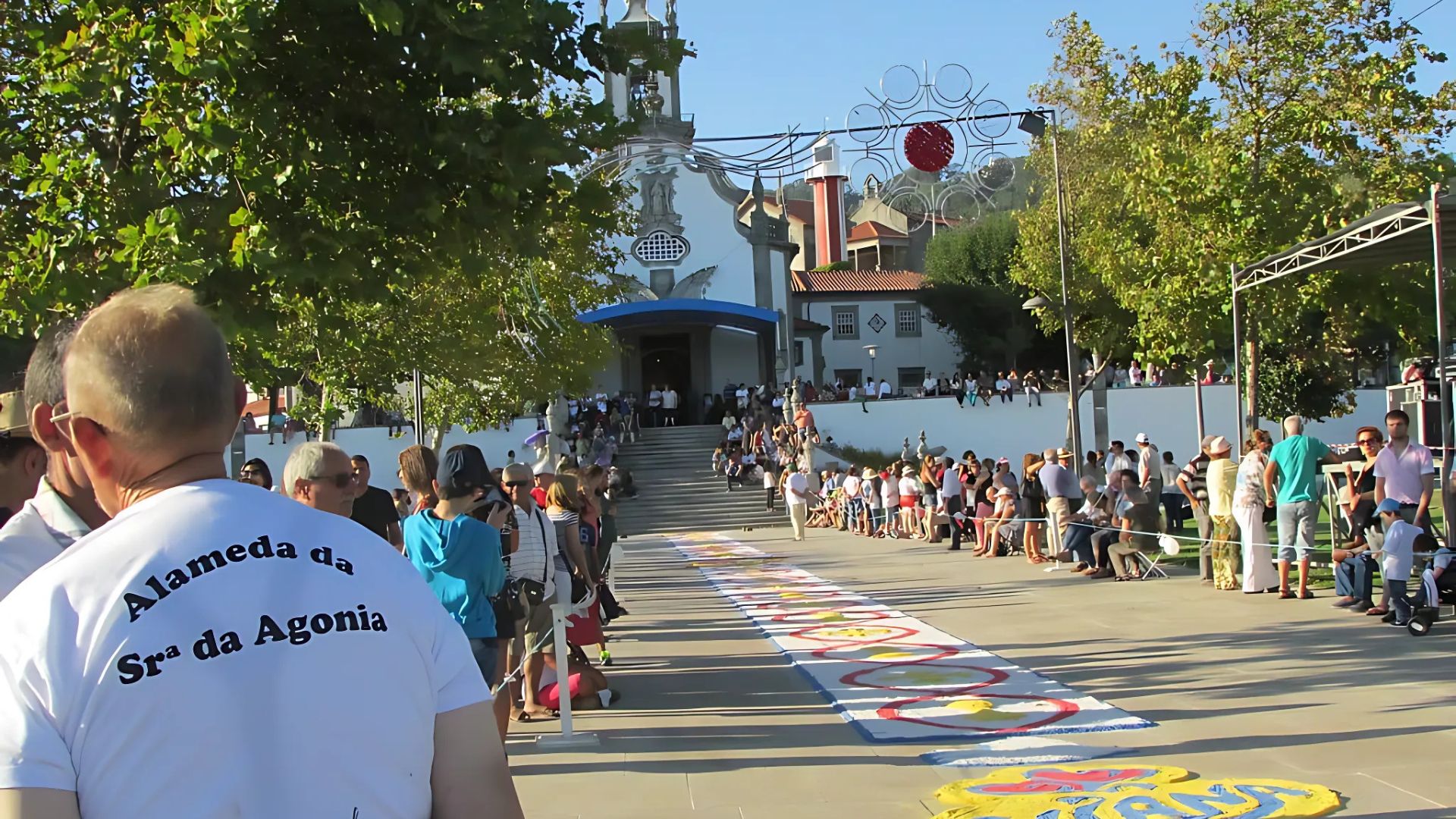
The Mendicant Procession: procissão solene
The Mendicant Procession, or procissão solene, moved me deeply.
It honors Nossa Senhora da Agonia, the patron saint of local fishermen.
Hundreds of people join together, carrying religious icons and relics through the city streets.
The atmosphere feels respectful and solemn.
Many walk barefoot as a sign of faith and devotion.
Each confraternity shows off unique colors, holding banners and candles.
My favorite moment comes during the “trasladação das imagens,” when locals transfer the saint’s image with careful precision.
Crowds line the decorated streets, falling quiet as the procession passes.
Prayers float in the air, bringing everyone together in a shared, meaningful tradition.
The Sea Procession: procissão ao mar
If the solene is somber, the Sea Procession (procissão ao mar) pulses with the city’s working heart.
This tradition began with fishermen asking for protection for their journeys at sea.
I stood with crowds along the docks, watching boats dressed in bright flowers and ribbons sail from the harbor.
Locals wave, sing, and toss flower petals into the water.
They lift the image of Nossa Senhora da Agonia onto a fishing boat, turning it into a floating altar as it travels in a parade across the waves.
The blessing of the fleet hits hard.
Fishermen and their families look on with hope and gratitude.
For a visitor, witnessing this unique marriage of faith and seafaring culture feels both powerful and unforgettable.

Desfile da Mordomia: Queens of Traditional Costumes
Nothing compares to the explosion of color and culture at the Desfile da Mordomia.
This parade celebrates the “mordomas,” local women dressed in trajes—traditional costumes piled high with gold jewelry and intricate embroidery.
I found myself swept along as lines of mordomas walked proudly through the city, each carrying a tray of symbolic offerings.
Their costumes aren’t just clothes; they’re living history, showing off the skills of generations.
Many mordomas are chosen for their commitment to community and tradition.
Watching them move in unison, laughing and chatting, felt like being invited into a Vianesa family reunion.
Cameras click everywhere, but it’s the pride in their eyes that sticks with me.
| Elements | Details |
|---|---|
| Trajes | Embroidered skirts, lace, colorful sashes |
| Jewelry | Multiple necklaces, filigree gold |
| Attitude | Proud, joyful, community focused |
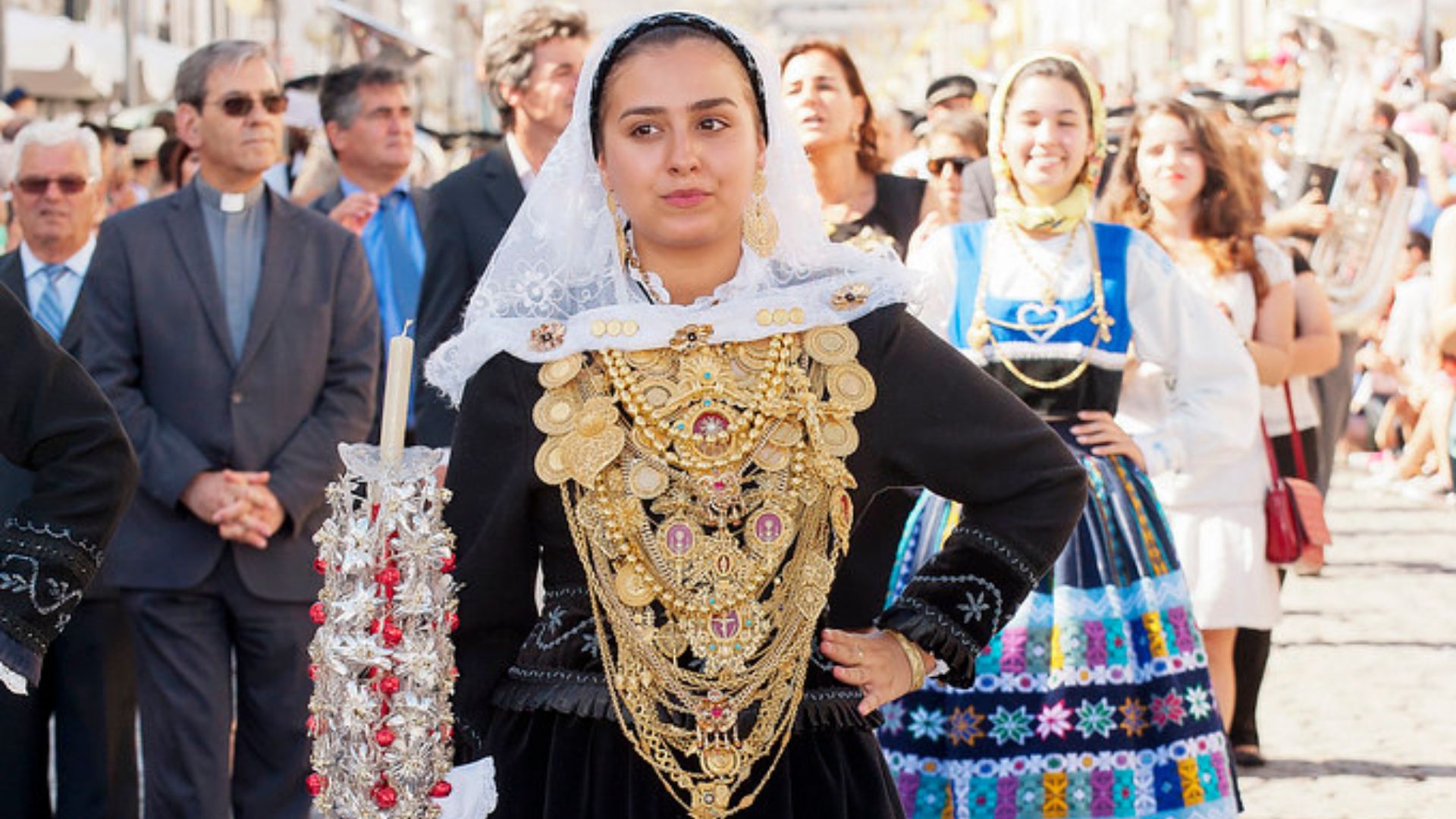
Historical and Ethnographic Parade
The Historical and Ethnographic Parade (cortejo histórico/etnográfico) turns the city’s streets into a living museum.
I couldn’t help but slow down as each group told a story from Viana do Castelo’s past through music, dress, and dance.
Different floats and groups represent trades, historical moments, and daily village life.
From bakers kneading imaginary dough to young couples performing traditional regional dances, there’s always something new.
For me, the parade’s diversity is its beauty.
Fishermen, farmers, blacksmiths, and weavers show off their heritage and craft.
Even if you’re new to Portuguese traditions, the display feels both accessible and rich with meaning.
These festivities aren’t just about the past—they celebrate the people who keep the traditions alive right now.
Experiencing the Visual Extravaganza: Sights, Sounds, and Flavors
No other time captures Viana do Castelo’s heart quite like August during Romaria d’Agonia.
Every street overflows with vibrant colors, pulsating drumming, and the aroma of local foods.
Tradition and lively celebration blend everywhere you look.
Gigantones & Cabeçudos: Magical Characters
I found myself face to face with the towering Gigantones and mischievous Cabeçudos, the festival’s iconic figures.
These gigantic puppet-like characters dance through crowded streets, their oversized heads bobbing to lively tunes.
Children laugh and chase after them, while adults snap photos, everyone eager to capture these playful giants.
The Revista de Gigantones e Cabeçudos parade stands out as a highlight.
Local artisans create the intricate costumes, showcasing everything from historic personalities to quirky, exaggerated faces.
I watched as they bobbed and twirled, bringing centuries-old folklore to life for festival-goers of all ages.
Between their parades and sudden street appearances, the Gigantones and Cabeçudos keep the energy high.
Meeting them felt like stepping into a living storybook.
It’s a must-see for visitors wanting real immersion.

Bombos, Serenades, and Local Music
Drums—bombos—echo everywhere.
The Desfile de Grupos de Bombos is unforgettable.
I felt the beat in my chest as dozens of groups marched with huge drums, their rhythms guiding the festival’s pulse.
Suddenly a serenade would start, and crowds quieted, captivated by soulful Portuguese melodies under the summer sky.
Evenings brought open-air concerts like Sons do Minho and Augusto Canário e Amigos.
In one musical moment, the entire plaza sang along, voices rising above the beat.
Traditional folk music blends with modern energy.
Music here isn’t background noise; it’s an invitation.
I realized the best way to experience Romaria d’Agonia is to let the music move you.
Stunning Flower Carpets & Street Exhibitions
One morning, I woke before sunrise to watch neighbors begin the famed tapetes floridos—brilliant flower carpets that decorate Viana’s historic streets for the processions.
These works of art use thousands of colorful petals, leaves, and seeds, each pattern carefully designed and crafted by hand.
Walking along these ephemeral rugs felt like strolling through a living painting.
There’s more to see: the Exposição de Rua fills the city center with handmade crafts, traditional costumes, and food stalls.
Each turn brought a new visual delight, whether intricate gold filigree jewelry glinting in the sun or rustic bread fresh from the oven.
These sights and flavors showcase the pride and creativity of Viana’s people.
They’re not just decoration—they’re woven into the very spirit of the Romaria d’Agonia.
Celebrating Portuguese Heritage: Artisans, Flavors, and Community
Local artistry, delicious flavors, and close-knit tradition come alive during Romaria d’Agonia.
From lively craft fairs and unique embroidery to memorable tastes of vinho verde and Minho’s famous filigree, I felt myself woven into the heart of Portuguese identity.
Feira de Artesanato & Local Handcrafts
One of the real highlights for me was exploring the bustling Feira de Artesanato in Viana do Castelo’s historic center.
Dozens of stalls lined the cobblestone streets, each brimming with goods that showcased the skill and creativity of local artisans.
From hand-painted ceramics to woven baskets and bold leatherwork, I loved seeing crafts passed through generations.
The exposição/feira de artesanato isn’t just for browsing—it’s interactive, too.
I stopped to watch lace makers at work and even tried a bit of weaving myself.
A few stalls displayed antique tools, giving a peek into how these crafts have evolved.
The friendliness of the artisans made it easy to ask questions.
I left with a couple of unique souvenirs I couldn’t have found anywhere else.
The circuito feirão guided me through several different craft “stations,” each with its own flair.
Vinho Verde, Street Food, and Sweet Treats
No festival in the Minho region feels complete without vinho verde.
I sipped this light, slightly fizzy wine alongside locals as we wandered the lively festival streets.
It’s crisp and refreshing—perfect for warm August days.
Street vendors offered everything from grilled sardines to piles of bifanas, those juicy pork sandwiches with a savory kick.
The aroma of roasting meats and sizzling pastries seemed to follow me everywhere.
I tried several types of doces tradicionais (traditional sweets), including arroz doce, a creamy rice pudding dusted with cinnamon.
My simple recommendation: Go hungry and be ready to try anything.
The flavors are comforting yet bold, with each taste telling a bit of the region’s story.
I was always just a few steps away from something delicious.
Minho’s Signature Filigree and Embroidery
I fell in love with Minho’s filigree jewelry the second I saw it. Local goldsmiths showed off intricate gold and silver designs, twisting and curling tiny wires into little masterpieces.
Some patterns have stuck around for centuries. I watched artisans shape those delicate wires, sometimes using the exact same methods their grandparents did.
Filigree here isn’t just jewelry—it’s tradition, pride, and a huge part of the festival’s fashion. Women wore bold heart-shaped pendants and ornate earrings, pairing them perfectly with traditional embroidered costumes.
The embroidery really amazed me. Bright floral motifs and rich colors covered aprons, shawls, and blouses.
Every outfit turned into a statement piece. Seeing all that detail gave me even more respect for the time and care behind each one.
If you’re hunting for a piece of authentic Minho to take home, nothing beats the craftsmanship you’ll find here.
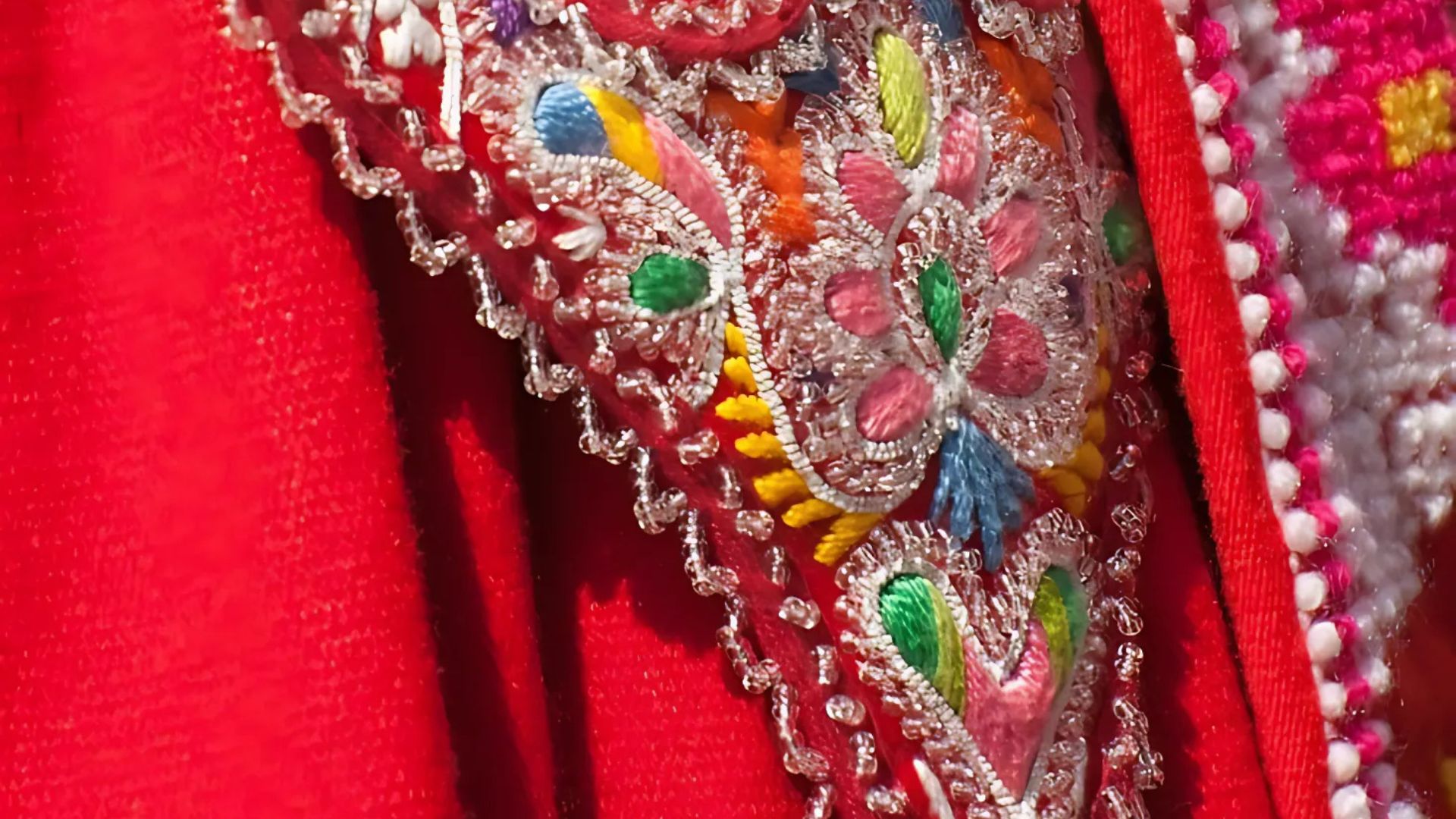
When Night Falls: Ultimate Festive Moments
When darkness settles over Viana do Castelo, the city pulses with new energy. The Romaria d’Agonia nights explode with color, music, and old traditions that somehow feel fresh under the night sky.
Fireworks and Fogo-de-Artifício Spectacles
I squeezed in shoulder-to-shoulder with locals by the river. The first crackle of fogo de artifício kicked off an unforgettable show.
Rivers of light shot into the air, bursting in wild, synchronized patterns above the Lima River and reflecting perfectly on the water below.
These fireworks aren’t just a quick flash—they’re full-on spectacles, planned down to the second. Some nights have both classic fireworks and modern light effects, creating a wild mix of sound, color, and movement.
Locals cheer, families gather on balconies, and visitors gasp with every explosion. For the best view, I grabbed a spot by the marina.
Some people swear by the iron bridge or Santa Luzia hill, though. Be ready for booming sounds and bursts of applause as the sky lights up in wild, dazzling colors.
The Midnight Alvorada Festiva
Just when I figured the night was winding down, the Alvorada Festiva jolted everything back to life. This “midnight reveille” is a very Portuguese wake-up call—only it happens at midnight, not dawn.
Brass bands march through the streets, firing up drums and blasting trumpets, while mini-fireworks echo between buildings.
Crowds pour out of cafés and homes, searching for the best view as music and noise fill every square. I couldn’t help but follow the band, swept along by the wild energy.
This moment always feels spontaneous, though it’s carefully timed. If you go, keep your camera handy.
Don’t be surprised if you end up dancing, clapping, or joining locals in shouting out familiar tunes until sunrise.
Open-Air Concerts and Community Revelry
Music just takes over at night during Romaria d’Agonia. Whether it’s a big concerto musical or a local band on a rolling stage, every plaza and corner buzzes with sound.
I wandered from traditional folk groups on Rua da Bandeira to lively pop concerts in the city square. Standing in those crowded squares, I felt connected with everyone—old, young, families, visitors.
Food stalls line the streets, selling grilled sardines, caldo verde, and sweet pastries. Chairs pop up out of nowhere, and strangers pull each other into little dance circles.
You’ll spot schedules posted around town or in festival booklets. It helps to show up a bit early if you want a front-row spot.
But honestly, sometimes it’s more fun to join a random group or just listen as music floats through the night.
Not-to-Miss Local Customs and Surprises
Some of my favorite memories come from those unexpected traditions. One night, I wandered into a peddy paper—it’s basically a festive scavenger hunt done in teams, with clues tucked away all over the historic center.
Locals put on these events to help everyone meet each other and dig up some of the town’s secrets.
Street performers pop up everywhere. Sometimes you’ll hear accordionists or see impromptu games break out.
A lot of people dress up in traditional clothes and wear gold filigree jewelry. At certain moments, someone will hand out candles for processions that wind through the streets, the flames flickering softly in the dark.
If you pay attention, you’ll catch quieter scenes too—elderly women chatting in doorways, teens showing off new dance moves, families splitting midnight snacks.
Honestly, every corner of Viana do Castelo hides its own little surprise during these magical nights.

